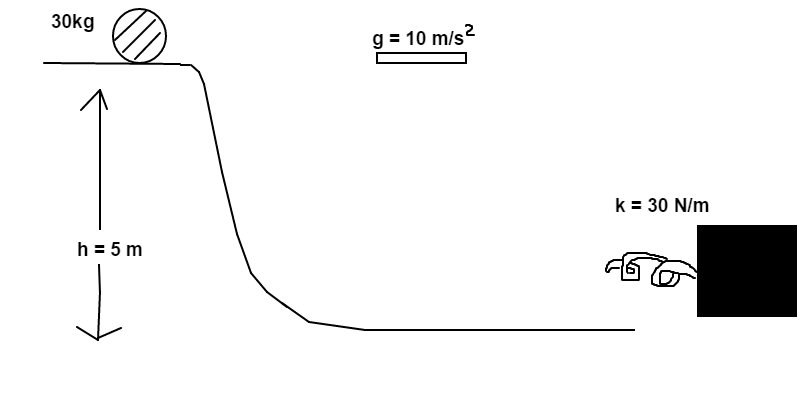Ball and Spring mechanics

A ball with a mass ( ) of , is placed on top of a frictionless hill at a height ( ) of . How much will the spring at the bottom of the hill be displaced in order to stop the ball if the spring constant ( ) is ?
Note :
This section requires Javascript.
You are seeing this because something didn't load right. We suggest you, (a) try
refreshing the page, (b) enabling javascript if it is disabled on your browser and,
finally, (c)
loading the
non-javascript version of this page
. We're sorry about the hassle.
All the potential energy of the ball at the top of the hill will be transferred to the spring; therefore, U p o t e n t i a l = U s p r i n g m g h = 2 1 k x 2 x = k 2 m g h = 3 0 m N 2 ( 3 0 k g ) ( 1 0 s 2 m ) ( 5 m ) = 1 0 0 = 1 0 m